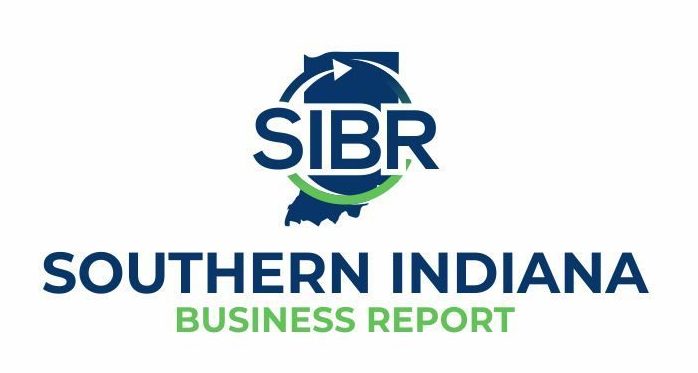Carol Johnson, Southern Indiana Business Report
JASPER – Affordability and availability of child care in Indiana has reached urgent status as counties grapple with how to expand child care and also make it affordable for working parents.
The Southern Indiana Gateway (SIG) region, which includes Crawford, Dubois, Knox, Orange, Perry, Pike and Spencer counties, has joined forces to address child care, now considered one of the most pressing issues affecting workforce participation.
Recognizing the urgent need for child-care solutions, the SIG Region took a regional lead by hiring Transform Consulting to assess the situation. The research revealed alarming statistics: a labor force participation rate of 72.3% among adults with young children in the SIG counties, with a staggering 1,700 parents currently unemployed due to shortages in child-care capacity.
A child care desert exists across all the SIG counties, said Erin Emerson, president and CEO of Perry County Development Corp. Emerson said the state of Indiana tracks child care, but she said the numbers the state reported included child care seats of limited availability, such as a few hours a day or few days a week, or for children who met certain criteria. She said the SIG Region report shows how difficult it is for parents who work full time to find adequate child care.
“We were really intentional when we did this study,” she said. “We wanted to make sure that when we did this study, if (a child care slot) was counted as a seat, it was a full-day, full-time seat,” she said.
An astonishing 875 children are on waiting lists for child-care facilities, and the region would need to increase full-time child-care seats by a significant percentage to accommodate these families, according to a press release about the report. Additionally, the data uncovered a critical gap between what parents can afford and the actual cost of child care, leaving many providers with slim profit margins and even budget deficits.
Child-care professionals earn significantly less than K-8 educators, making it increasingly difficult for parents working in child-care facilities to afford child care for their own children.
As more women have joined the workforce, child care issues have only grown. But Emerson said the struggle mostly remained an issue for families to figure out until more and more employers began experiencing a workforce shortage.
Grants for employer-sponsored child care
Indiana Gov. Eric Holcomb announced last month Indiana’s Family and Social Services Administration Office of Early Childhood and Out-of-School Learning awarded $18 million in employer-sponsored childcare grants to 64 businesses, community groups and school corporations.
No counties in the Radius Indiana region received child care grants from the recent announcement.
Emerson said the grants are a positive step, but because many employers are reluctant and/or lack the space and means to offer child care to employees, more needs to be done.
“The need for reliable, skilled labor has made employers better understand the needs of their employees,” Emerson said. “COVID brought about a culture shift and the importance of having work-life balance. Anyone who wants to be in the workforce should have the ability to be in the workforce. It shouldn’t be a barrier to have a child.”
The SIG Region is not alone in facing these challenges, as these child-care concerns resonate across Indiana. Before the pandemic, childcare-related workforce absences and turnover were costing Indiana businesses a staggering $1.8 billion annually. Child care, housing and transportation have consistently emerged as heightened workforce challenges in recent years.
Furthermore, the childcare business model in Indiana is perceived as broken and may even constitute a market failure. However, there is hope on the horizon as the state and lawmakers are actively working to address these child-care issues. Senate Bill 36, the Early Educators Apprenticeship Act, has been introduced to support apprenticeships in early education.
Emerson said she’s optimistic the 2024 session of the Indiana Legislature will result in changes to make the regulation process less cumbersome for child care providers while still maintaining safety.
“If we want to grow our state, we have to take this as a serious issue that needs to be addressed,” Emerson added.
Child care recommendations
In an effort to better communicate potential solutions, SIG leaders hosted a regional Child Care Summit earlier this year, with state legislators and childcare providers, to review and discuss findings from its 2023 Child Care Analysis study. Topics included; barriers to recruiting staff, capacity challenges, and regulatory issues that hinder the expansion of providers.
To bridge these challenges and streamline regulations, SIG Region recommends a series of actions:
- Automatically enroll child-care workers in the voucher program to help them pay for child care, encouraging more individuals to enter the child-care workforce.
- Allow teachers to work in classrooms under supervision while awaiting documentation for required testing and training, streamlining the process.
- Introduce flexibility in children’s movement from one class to the next, enhancing the adaptability of child-care facilities.
- Provide free background checks to child-care providers, reducing financial burdens on small providers. Enable the portability of background checks and consent forms, simplifying the process and reducing duplication.
- Offer affordable virtual continuing education classes to reduce costs for child-care facilities and parents.
- Allow flexibility in food program regulations for substitutions and dietary needs while transitioning to electronic record-keeping.
- Permit microsites where employers can collaborate with child-care providers to operate child care facilities under a shared license.
- Streamline the voucher program process to make it more accessible for parents seeking employment.
- Emphasize problem-solving over enforcement, enabling child-care providers to focus on the well-being of children and high-quality early learning.
The SIG Region, together with Indiana state lawmakers, is dedicated to ensuring that parents have access to quality, affordable child care, and that child-care professionals are supported in their critical work. The SIG Region is also exploring innovative funding models, such as the Kentucky program, where the state, employers and families share the cost of child care.
These recommendations and collaborative efforts aim to address the child-care crisis, improve child-care worker conditions, and create a more supportive environment for families in the SIG Region and beyond.



